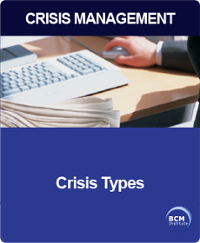Crisis Scenario:
Organisational Misdeed: Deception
 Crises of organisational misdeeds arise when management makes certain decisions, knowing the harmful consequences.
Crises of organisational misdeeds arise when management makes certain decisions, knowing the harmful consequences.
In such cases, superiors overlook the long-term consequences of strategies and implement them for immediate results. This will adversely affect the stakeholders and external parties (or interested parties).
Examples of organisational misdeeds can be further classified into the following three types. They are: Skewed Management Values
Deception and Management Misconduct.
 Deception
Deception
Organisations face a crisis of deception when management intentionally alters data and information. For example:
- Management makes fake promises and wrong commitments to the customers
- Communicating false information about the organisation and products will lead to a crisis of deception
Introduction
Crisis scenarios arising from Organisational Misdeeds – Deception pose significant threats to both the operational and reputational integrity of an institution.
These crises are often rooted in intentional efforts by management or staff to obscure the truth, whether by falsifying records, hiding failures, or misrepresenting facts to stakeholders.
Unlike crises caused by external forces or accidental failures, deception-based scenarios represent a systemic breakdown in ethics and governance, often cultivated over time and undetected until severe damage has occurred.
Such deceptive practices not only violate legal and regulatory standards but also deeply undermine trust among employees, customers, investors, and the wider public.
Once exposed, the fallout can be swift and far-reaching, including financial loss, leadership resignations, regulatory sanctions, and public backlash.
The table that follows presents real-world examples of crisis events caused by organisational deception, helping leaders and risk managers identify early warning signs and strengthen accountability frameworks.
Definition: Deception
Organisational Misdeeds – Deception refers to the deliberate act of misleading stakeholders—including customers, regulators, employees, or the public—through falsification, omission, or manipulation of information by individuals or groups within an organisation.
This deceptive behaviour may involve financial fraud, misinformation, cover-ups, or concealment of critical data, typically intended to protect the organisation’s reputation, secure competitive advantage, or avoid accountability.
Over time, such misconduct can severely erode stakeholder trust, attract legal penalties, and compromise the organisation’s long-term viability.
Example of Crisis Scenario: Deception
The table below shows a list of examples for the crisis scenario: Organisational Misdeeds – Deception, which involves intentional efforts by the organisation or its leadership to mislead stakeholders—such as regulators, customers, employees, or the public—through falsification, omission, or manipulation of the truth.
| No. | Example | Description |
|---|---|---|
| 1 | Falsifying Financial Statements | Senior executives manipulate accounting records to inflate profits or hide liabilities from investors and auditors. |
| 2 | Misrepresenting Product Safety or Quality | A company knowingly markets defective or unsafe products while withholding critical safety information from users. |
| 3 | Concealing Data Breaches | Management chooses not to disclose a significant cybersecurity breach to avoid regulatory penalties or reputational damage. |
| 4 | Greenwashing | The organisation exaggerates or fabricates its environmental sustainability efforts to attract ESG investors or improve brand image. |
| 5 | Forged Compliance Certificates | Submitting falsified regulatory compliance documents (e.g., ISO certifications, safety audits) to authorities or partners. |
| 6 | False Advertising and Promotions | Deliberately promoting fake features, benefits, or pricing schemes in advertisements to mislead consumers. |
| 7 | Tampering with Research or Testing Results | Manipulating R&D or safety test results (e.g., pharmaceutical trials, emission tests) to secure approvals or avoid recalls. |
| 8 | Hiding Conflict of Interest | Management conceals relationships with third-party vendors or contractors for personal or financial gain. |
| 9 | Misleading Investors Through Selective Disclosure | Only sharing positive news or metrics with investors while withholding material adverse developments. |
| 10 | Ghost Employees and Fake Payroll | Setting up non-existent staff on the payroll for siphoning company funds or inflating employment figures. |
| 11 | Altering Employee Records | Changing employee work hours, roles, or performance records to manipulate HR decisions or avoid liabilities. |
| 12 | Covering Up Workplace Incidents | Internal incidents such as harassment, theft, or accidents are intentionally omitted from official reports. |
| 13 | Fake Corporate Social Responsibility (CSR) Reports | Publishing CSR impact reports based on fabricated data or incomplete audits to boost public image. |
| 14 | Manipulating Customer Reviews | Paying for fake positive reviews or removing legitimate negative feedback from platforms to deceive consumers. |
| 15 | Delaying or Denying Product Recalls | Intentionally withholding information or stalling recalls of faulty products to minimise financial losses. |
Conclusion
Effectively preventing and responding to Organisational Misdeeds – "Deception" demands more than just compliance with policies; it requires embedding a culture of honesty, integrity, and transparency throughout all levels of the organisation.
Whistleblower mechanisms, ethical training, transparent communication, and independent audits are vital tools in uncovering and discouraging deceptive behaviour. Leaders must also be willing to confront uncomfortable truths and act decisively when misconduct surfaces.
By understanding the types of deceptive acts that can escalate into full-blown crises, organisations are better equipped to build resilience, protect their stakeholders, and uphold their mission and values.
The consequences of deception are often disproportionate to the initial act, but with proactive governance and ethical leadership, these risks can be mitigated before they spiral into irreversible damage.
Reflection as a BCM and CM Practitioner
 As discussed in "What Crisis or Crisis Scenario Should I Be Planning For My Organisation?", you may wonder whether this type of crisis may not be part of your job scope. Click the right icon to read more
As discussed in "What Crisis or Crisis Scenario Should I Be Planning For My Organisation?", you may wonder whether this type of crisis may not be part of your job scope. Click the right icon to read more
The key in this discussion is to identify the kinds of crisis scenarios and to raise them with the relevant interested parties for responsible professionals who have recognised the potential for a crisis, so that they can implement a crisis response tailored to this specific scenario.
Find out more about Blended Learning, Crisis Management & Crisis Communication Certification Programs.
Contact our course consultant colleagues to know more about our blended learning crisis management and crisis communication certification program, and when the next course is scheduled.
The crisis communication blended learning courses are the CM-3 Blended Learning CM-300 Crisis Management Implementer and the CM-5 Blended Learning CM-5000 Crisis Management Expert Implementer.
| Crisis Management CM-5 & CM-3 | ||
 |
 |
![[BL-CM] [5] Register](https://no-cache.hubspot.com/cta/default/3893111/82024308-16f4-4491-98be-818a882c6286.png) |
 |
 |
 |
| Crisis Communication CC-5 & CC-3 | ||
 |
||
![Register [BL-CC-3]*](https://no-cache.hubspot.com/cta/default/3893111/7ba2f5f9-19ae-4a0e-a599-a2653b8c0bb5.png) |
||
 |
Please feel free to send us a note if you have any of these questions to ![Email to Sales Team [BCM Institute]](https://no-cache.hubspot.com/cta/default/3893111/3c53daeb-2836-4843-b0e0-645baee2ab9e.png) |
 |
Do You Want BCM Institute to conduct training courses funded by the Singaporean and Malaysian governments to implement or update your BC or CM plans?
Reference Guide
 Goh, M. H. (2016). A Manager’s Guide to Implement Your Crisis Management Plan. Business Continuity Management Specialist Series (1st ed., p. 192). Singapore: GMH Pte Ltd.
Goh, M. H. (2016). A Manager’s Guide to Implement Your Crisis Management Plan. Business Continuity Management Specialist Series (1st ed., p. 192). Singapore: GMH Pte Ltd.
Note: This version is the draft 2nd Edition being updated in 2024. The numbers in the square brackets {C##] and [AX-#] are the cross-referencing of the actual chapter and appendices in the 2016 Edition.





![[BL-3-Catalog] What Specialist Level Blended Learning Courses that are Available?](https://no-cache.hubspot.com/cta/default/3893111/4b22a53c-6e3e-4b9e-8c2a-888423f1d26c.png)
![[BL-5-Catalog] What Expert Level Blended Learning Courses that are Available?](https://no-cache.hubspot.com/cta/default/3893111/fe175db3-7f57-4636-bf09-e9a836aa5478.png)

